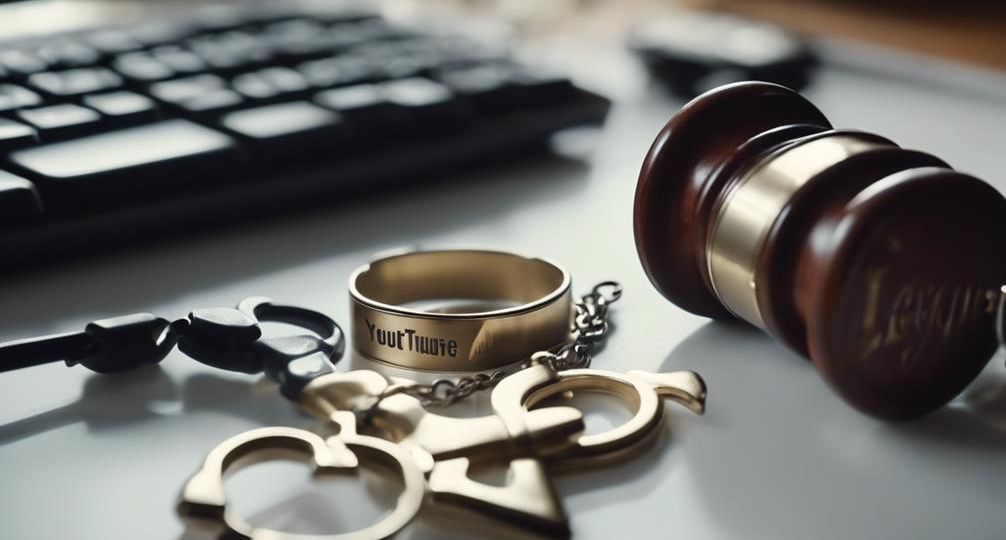
Is it illegal to use other people’s YouTube videos?
In the manner of a modern-day pirate, you’ve stumbled upon a treasure trove of YouTube videos that perfectly complement your project. But before you sail ahead, have you considered the potential legal implications?
Is it illegal to use other people’s YouTube videos without their explicit permission? Ponder over this, as we navigate the murky waters of copyright laws, YouTube’s policies, and the concept of fair use.
You’d be surprised at what you might discover.
Key Takeaways
- Using other people’s YouTube videos without permission or proper attribution can constitute copyright infringement.
- Fair Use allows limited usage of copyrighted videos for criticism, news reporting, teaching, or research.
- Commercial use or altering videos requires explicit permission from the original creator.
- Violating copyright laws can lead to consequences such as video takedowns, legal action, and channel termination on YouTube.
Understanding Copyright Laws
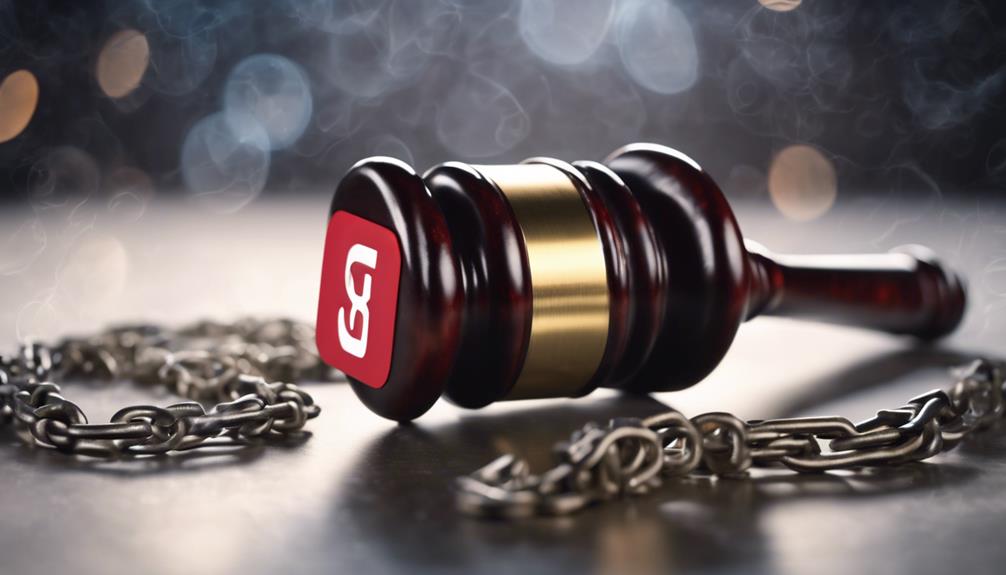
To fully grasp the legal implications of using other people’s YouTube videos, you must first understand the intricacies of copyright laws. These laws protect original works of authorship, which include videos. When a person creates a video, they automatically own the copyright to it, giving them exclusive rights to use and distribute it.
Now, you might be wondering about ‘Creative Commons’ and ‘Royalty Free Videos’. Creative Commons is an internationally recognized license that allows creators to share their works under specific conditions. When a video is under a Creative Commons license, you’re granted permission to use it in certain ways, often including commercial uses, as long as you provide appropriate credit.
On the other hand, ‘Royalty Free Videos’ means you only pay once to use the video and there’s no need to pay a royalty every time it’s used. However, this doesn’t mean that the video is free from copyright. The copyright is still owned by the original creator, but they’ve released it for others to use under certain conditions.
What YouTube’s Policies Say
When it comes to using other people’s YouTube videos, YouTube’s policies are clear and strictly enforced to protect the rights of content creators. Misuse of content, even with policy loopholes, can lead to penalties. However, as a platform that champions creativity and innovation, YouTube also provides ways for you to legally use other’s content.
Here’s what you need to know:
- Fair Use Policy: This allows you to use copyrighted content under certain conditions. It’s not a loophole, but a legal doctrine. Be aware, though, it’s not a free pass and is subject to interpretation.
- Video Monetization: You can only monetize videos that you’ve significantly transformed or added value to. Simple reuploads won’t qualify for monetization.
- Content ID Claims: If your video contains copyrighted material, the rights owner can identify and manage how their content is used on YouTube.
- License Agreements: Some creators allow their content to be reused with proper attribution. Always check for this before using someone else’s video.
In essence, respect for intellectual property rights shapes YouTube’s policies. Exploring new ways to create content while abiding by these rules can drive your success on the platform.
Consequences of Copyright Infringement
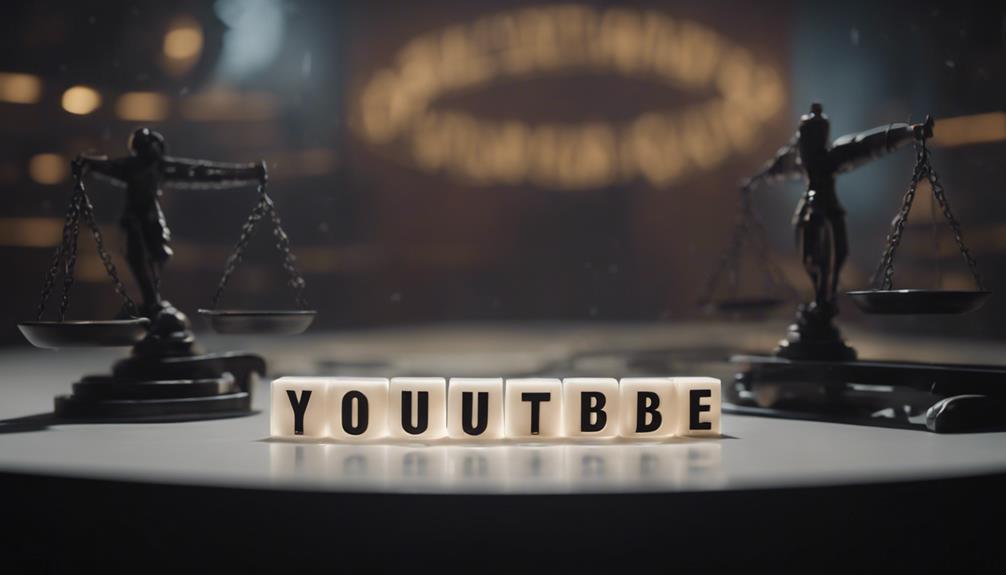
If you infringe on copyright laws on YouTube, you’re likely to face serious repercussions that can significantly impact your content creation journey. The piracy impact of such actions is far-reaching, often tarnishing your reputation and damaging your channel’s standing.
YouTube’s stringent copyright infringement policies can lead to your video being taken down, a copyright strike against your channel, or even its termination. Each strike stays on your record for 90 days, and if you accumulate three within that period, YouTube will terminate your channel. This hampers your ability to innovate and share your unique ideas, effectively stifling your digital creativity.
The legal ramifications can be severe as well. Copyright holders may file a lawsuit against you, which can result in hefty fines or even imprisonment in extreme cases. Legal disputes aren’t only financially draining but also time-consuming, diverting your focus from content creation.
Fair Use and YouTube
You might be wondering how the concept of ‘Fair Use’ applies to YouTube.
It’s a crucial aspect of copyright law that can potentially shield you from infringement claims.
Let’s explore how understanding this policy can protect your interests and what could happen if you disregard it.
Understanding Fair Use Policy
Diving into the complex world of Fair Use Policy, it’s crucial to grasp that this doctrine allows limited use of copyrighted material without requiring permission from the rights holders. This rule, however, isn’t a free pass to use any content as it’s often misunderstood. It’s essential to debunk some Fair Use Misconceptions and understand the nuances of Copyright vs Trademark.
In your innovative pursuits, consider:
- Fair Use applies to criticism, news reporting, teaching, or research.
- It’s not a defense for all copyright infringement claims.
- Copyright protects creative work, while Trademark defends brand identifiers.
- The Four Factor Test determines whether your use falls under Fair Use.
Copyright Infringement Consequences
While understanding the nuances of Fair Use Policy is vital, it’s equally important to know the potential repercussions of copyright infringement on YouTube. If you’re found guilty, infringement penalties can be severe, ranging from your video’s removal to your channel being terminated. In some cases, you might even face legal action.
However, legal defenses do exist. You can argue that your video falls under Fair Use, which permits the use of copyrighted material under certain conditions. To do so, you’ll need to demonstrate that your work is transformative, used in a limited and reasonable manner, or doesn’t substitute the original.
It’s a complex landscape, but understanding these rules can help you navigate it more confidently.
When Permission Is Necessary
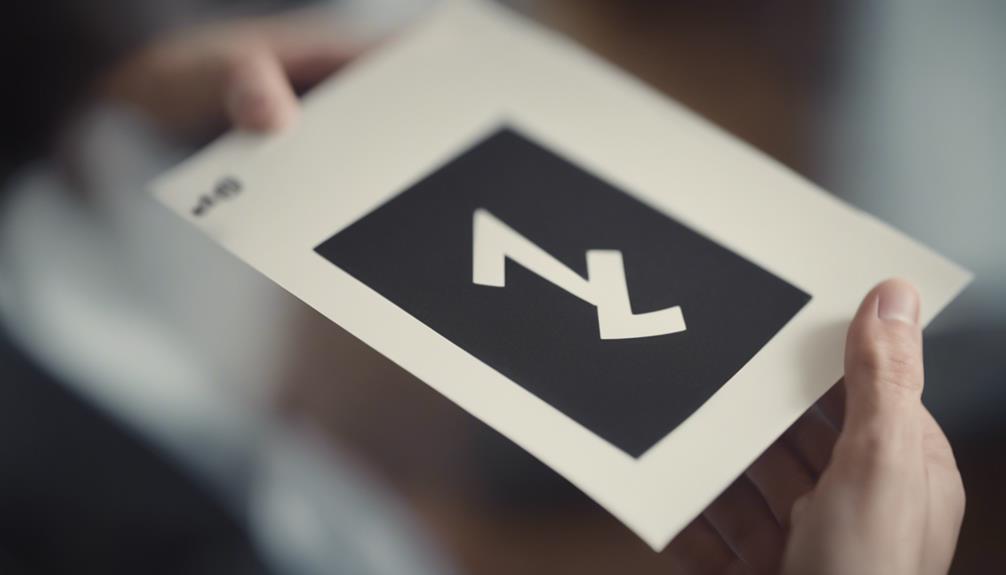
Understanding when and why permission is necessary to use other people’s YouTube videos hinges on copyright law principles. Copyright law can be complex, but in the context of video monetization and embedding legality, a few key points need your attention.
- Firstly, if you’re using someone else’s video for commercial purposes, permission is indeed necessary. You can’t monetize someone else’s content without their explicit consent.
- Secondly, if you’re editing or altering the video in any way, permission is required. This applies even if you’re not making money from the video.
- Thirdly, embedding a video on your own website or blog is generally legal, given YouTube’s standard embed feature. However, if the content owner has disabled embedding, respect their choice and refrain from doing so without their permission.
- Lastly, even if you’re just sharing a video privately, you should still ask for permission.
Innovative content creation often requires bending the rules, but when it comes to copyright, it’s best to play it safe. Navigating these laws might seem daunting, but with due diligence and respect for others’ work, you can avoid infringement and foster a culture of fair use.
How to Request Video Usage
If you need to use someone else’s YouTube video, it’s essential to request permission properly to avoid legal complications. You’d be surprised how many content creators are open to collaborations if approached respectfully. Consider your approach as a potential avenue for both parties to explore innovative video monetization strategies.
First, identify the video owner and reach out through YouTube’s messaging system. Alternatively, look for their contact details in the video description or their channel’s ‘About’ section. Be clear about why you want to use their content and how it will benefit them.
Here’s a simple table to guide your request:
| Steps | Description |
|---|---|
| Identify | Find who owns the video |
| Contact | Reach out via YouTube messaging or email |
| Be Clear | Explain why and how you want to use the video |
| Negotiate | Discuss potential benefits for them |
| Document | Keep a written record of the permission |
Legal Repurposing of Videos
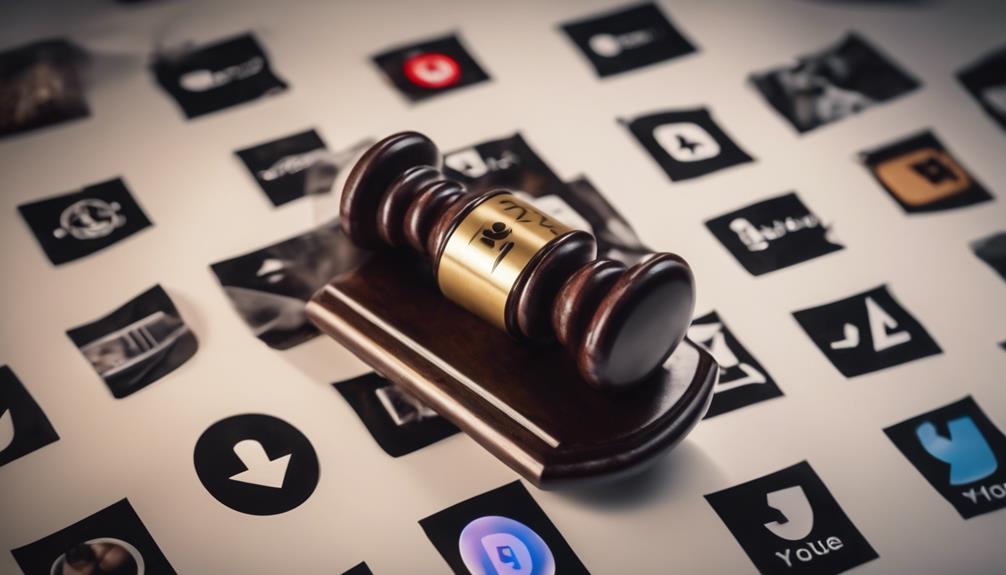
Navigating the legal landscape of repurposing YouTube videos can be tricky, but it’s entirely possible to do so within the parameters of the law. Exploiting legal loopholes isn’t a sustainable business model, but understanding them can help you innovate in the complex world of digital media.
The key to legally repurposing videos rests on a few essential principles. Let’s break them down:
- Fair Use Doctrine: This legal principle allows you to use copyrighted material under specific circumstances, like criticism, news reporting, or educational purposes. It’s a delicate balance, but if utilized correctly, it can be valuable.
- Video Monetization: Making money from repurposed videos is tricky. Unless you’ve obtained explicit permission from the original creator, monetizing can lead to legal troubles. Always be cautious.
- Public Domain: Videos in the public domain are free to use and repurpose. However, ensure the video truly is in the public domain before proceeding.
- Creative Commons: Some creators license their videos under Creative Commons, allowing others to use and even monetize their work, with specific conditions.
Content ID and YouTube
Let’s turn our attention to the topic of Content ID and YouTube.
It’s crucial to understand how YouTube’s Content ID system works, what constitutes copyright violations, and how to handle content disputes.
Being well-informed about these issues will help you navigate the often complex realm of online video sharing without legal hitches.
Understanding YouTube’s Content ID
To fully comprehend the legality of using others’ YouTube videos, you need to understand YouTube’s Content ID system, a tool designed to help copyright holders identify and manage their content on YouTube. This system ensures digital rights by flagging any content that matches data provided by copyright owners.
In the context of content monetization, Content ID equips creators with:
- The ability to track and manage their original content
- Options for action when matches are found (like blocking or monetizing the video)
- A platform for resolving disputes if a claim is contested
- Enhanced control over their intellectual property
Understanding this system is key to navigating YouTube’s copyright landscape and respecting other creators’ rights.
Violations and Copyright Infringements
In understanding YouTube’s Content ID system, you’re more equipped to avoid violations and copyright infringements, critical issues that can lead to serious penalties. This system is pivotal in the fight against Digital Piracy, protecting Intellectual Property rights by identifying and managing copyright-protected content on YouTube.
If you misuse someone else’s content without permission, it’s considered an infringement, potentially resulting in your video’s removal or legal action from the content owner. It’s essential to respect original works and their creators’ rights, refraining from unauthorized usage.
In an era of digital innovation, it’s not just about creating and sharing content, but also responsibly navigating YouTube laws. In essence, understanding these elements ensures you’re not inadvertently stepping into legal troubles.
Dealing With Content Disputes
When you’re faced with a content dispute on YouTube, understanding how to navigate the Content ID system is crucial to resolving the issue and avoiding potential legal ramifications. Here are some steps to take:
- Recognize that Content ID matches material that violates intellectual property rights.
- File a dispute if you believe the Content ID claim is incorrect.
- If the claimant insists on their claim, you can appeal the decision.
- If you lose the appeal, a copyright strike may be issued, affecting your channel.
Dispute resolution requires a grasp of these processes. Be innovative in presenting your case clearly and convincingly. Remember, infringing on others’ intellectual property isn’t only unethical but may also lead to legal consequences.
Protecting Your Own Content
While it’s crucial to understand the legality of using others’ YouTube content, it’s equally important to know how to safeguard your own videos from unauthorized use. In the realm of digital rights, YouTube provides several tools to help you protect your content. The platform’s Content ID system allows you to monitor and manage your videos, ensuring that they aren’t being used without your permission. This is particularly important when it comes to content monetization. Unauthorized use of your videos can lead to lost revenue, so protecting your content is essential.
Besides Content ID, consider using watermarks, which can deter others from using your content without attribution. Additionally, make your copyright ownership clear in your video descriptions. If unauthorized use does occur, YouTube’s copyright takedown notices are a solid recourse.
Lastly, be proactive. Regularly monitor the platform for potential infringements and promptly address any issues that arise. While it’s impossible to completely eliminate the risk of unauthorized use, these strategies can significantly reduce the likelihood. Remember, protecting your content isn’t just about preserving your creative work, it’s also about safeguarding your revenue stream.
Case Studies of Infringement
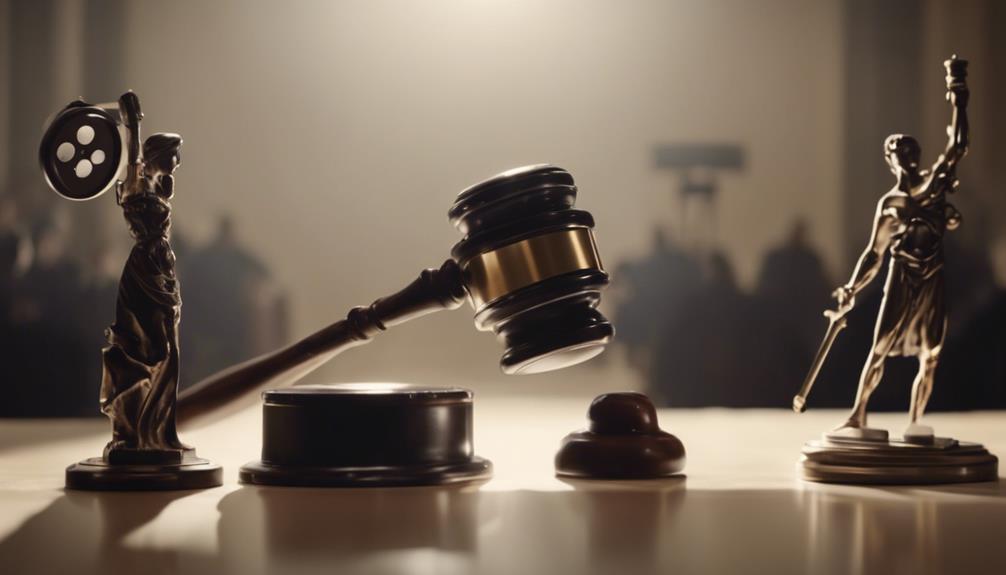
Let’s delve into real-life instances where unauthorized use of YouTube content led to infringement lawsuits, shedding light on the potential legal implications of such actions. You’ll understand how infringement penalties can be severe and why legal defenses are crucial.
- Lenz vs. Universal Music Corp: This 2007 case is a prime example of a copyright holder misusing their power. Universal issued a takedown notice for a video of a child dancing to Prince’s song. Lenz argued for the fair use defense and won, setting a precedent for considering fair use before issuing takedown notices.
- Viacom vs. YouTube: In 2007, Viacom sued YouTube for $1 billion, alleging that YouTube was complicit in copyright infringement by users. YouTube’s defense was the safe harbor provision in the DMCA, and they won the case.
- Brownmark Films vs. South Park: In a 2011 case, South Park parodied a viral video. The court ruled in favor of South Park, citing the parody as a transformative work under fair use.
- Prince vs. Cariou: In 2013, Prince used Cariou’s photographs in his art exhibit without permission. The court ruled in favor of Prince, stating the work was transformative.
To ensure you’re on the right side of the law when using other people’s YouTube videos, it’s crucial to familiarize yourself with YouTube’s Copyright Center. This hub provides detailed guidance on YouTube’s copyright rules and the repercussions of infringing them.
In case you step on a legal landmine, it also helps you understand how to resolve copyright issues.
Understanding YouTube’s Copyright Rules
Navigating through YouTube’s Copyright Center, you’ll find that understanding its copyright rules is crucial to avoid potential legal issues when using other people’s YouTube videos. As an innovator, it’s essential to know that YouTube takes Digital Rights and Video Monetization seriously.
You should be aware of these core concepts:
- Every video upload involves a potential copyright issue.
- The creator of the video owns the copyright unless they formally transfer it.
- Using someone else’s content without permission, even if you credit them, can still lead to copyright infringement.
- Monetizing a video that contains copyrighted material is illegal and can lead to your video being taken down.
Being informed and respectful of these rules ensures you navigate YouTube’s platform legally and ethically.
Copyright Infringement Consequences
If you infringe on copyright laws on YouTube, you’re likely to face severe consequences, ranging from having your video taken down to legal repercussions. These infringement penalties aren’t light – you could be sued and possibly owe damages, or even face criminal charges.
YouTube’s Copyright Center is your guide through this tricky terrain. It provides information about rights owners, copyright strikes, and potential legal defenses. However, it’s essential to remember that these defenses aren’t foolproof. Fair use, for example, is often misunderstood and can’t be relied on as a consistent legal safety net.
Therefore, it’s paramount to respect copyrights, fostering innovation by creating your unique content. This way, you’ll avoid the severe aftermath of copyright infringement.
Resolving Copyright Issues
While YouTube’s Copyright Center serves as a valuable resource in understanding copyright complexities, it’s equally crucial to know how to resolve potential issues you may encounter. This won’t only protect your channel from potential legal pitfalls but also ensure you maintain a positive online presence.
When dealing with copyright issues, consider the following steps:
- Understand Digital Rights Management, and how it helps protect and manage copyrights online.
- Check the Content Licensing of the video. Ensure you have the necessary permission to use it.
- In case of a copyright claim, respond promptly. You may dispute it if you believe it’s a mistake.
- If your video was removed due to a copyright claim, you might consider filing a counter-notification.
Staying informed and responsive can prevent potential copyright issues on YouTube.

